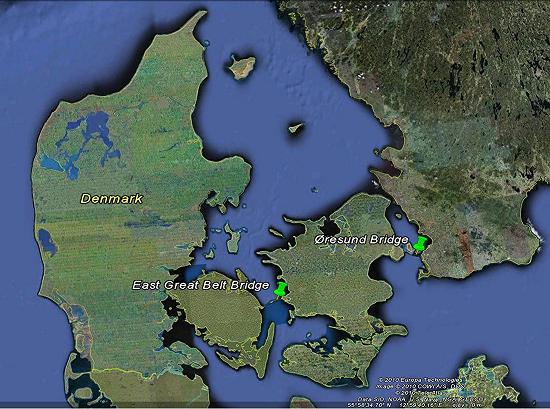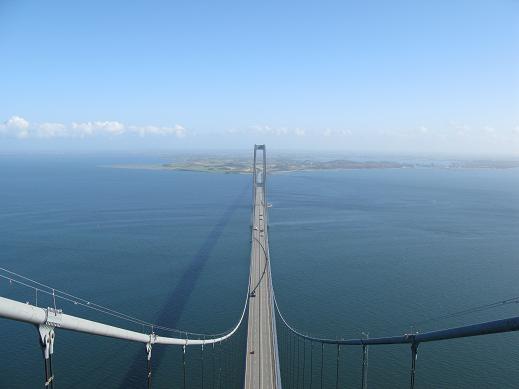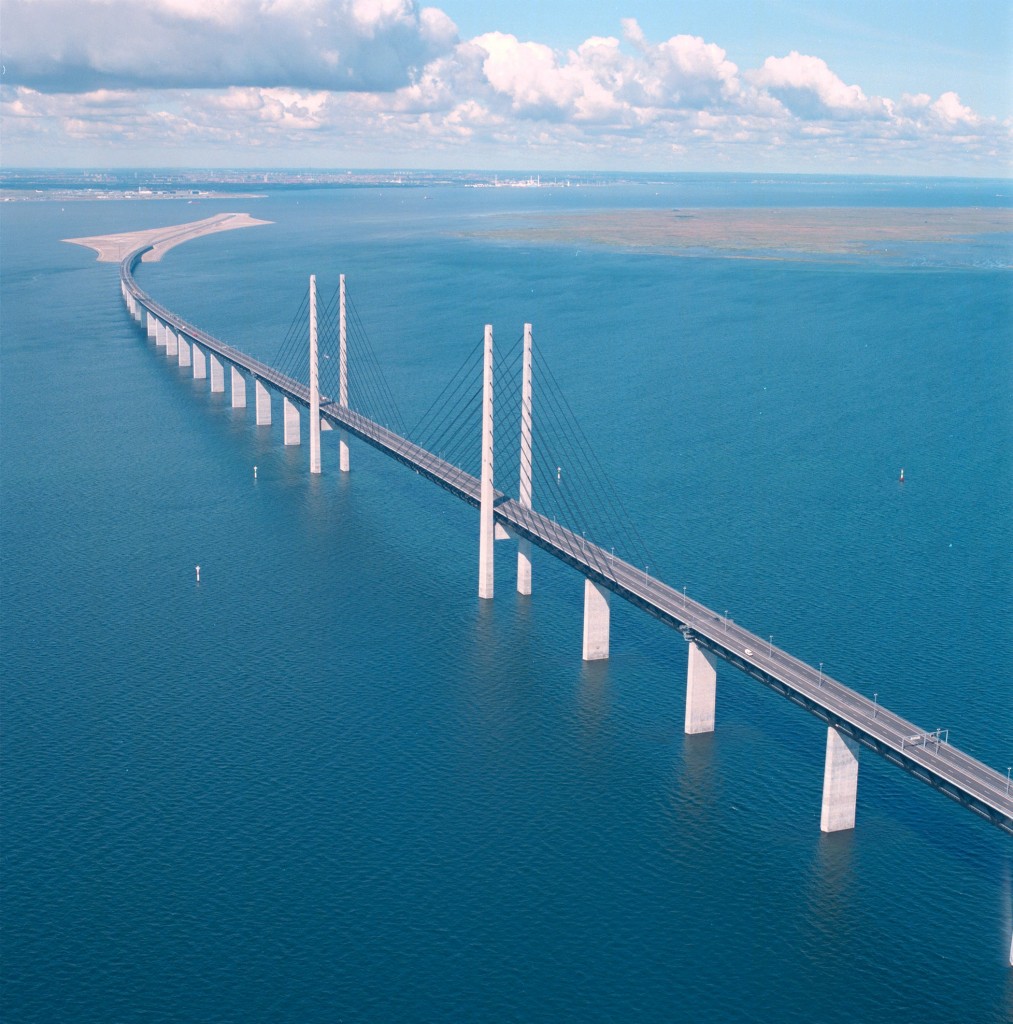Article No.. .. .. .. .. .. .. 10
Industrial Ph.D. Project (November 2009 - October 2012)
Student: Antonio Acampora
Supervisor (s): Christos Georgakis T.
Industry Partner: IPU
Keywords: Bridge, Rain Wind induced vibration monitoring, cables, CFD, database, vibration
Contact: Antonio Acampora (antac@byg.dtu.dk)
Background and Motivation:
Over the past 60 years extensive research has been undertaker in the field of bridge aerodynamics. Computing, wind tunnel facilities, site testing, all played their part in the achievement of a safer design of current long-span bridges. Nonetheless, there still occur troubling vibration on long-span bridges, of which cable vibration seem to remain the least understood. Excitation mechanisms are currently Broadly grouped into two forms: those two attributable the wind and those Which are the consequence of somebody somehow than the form of loading, ie structurally induced.
Amongst the wind-induced mechanisms, Involving those rain and / or ice seem to generate the largest cable vibration amplitude. Nevertheless, there is Still no definitive understanding and description of these excitation mechanisms. One Reason for this is a general lack of understanding of the exact meteorological conditions associated with these vibrations. Attempts two model these vibrations have been met with Varying degrees of success. This is most likely due to the fact that the observed vibrations are a result of complex wind flow around the structure. The appropriate definition of the flow field is crucial. Two areas in Which wind flows Modeling has been deficient are: the modeling of wind correlation length over medium distances and heights, between 100-5000m, and Modeling of Flow Behind Structures or structural members as wake effects.
This project aims on a better understanding of the correlation between cable vibration and wind / weather using advanced monitoring systems, investigation of wind correlation two medium horizontal distance and height and on the development of wakeboard effect parametrisation With Experimental and CFD modeling.
Summary:
The objective of the proposed research is two focus on the comprehensive monitoring of bridge cable vibration and the associated meteorological Conditions for the understanding of the vibration mechanisms and ultimately the development of robust flow-field model updating techniques. To achieve this objective, several tasks are proposed:
-
Database of known cable vibration events and associated meteorological conditions from cable-stayed bridges and suspension bridges around the world;
-
Monitoring of the cable vibration on two bridges: the Great Belt East Bridge (Belt) in Denmark, connecting the islands of Funen and Sealand, and the Oresund bridge connecting Denmark and Sweden;
-
Computational Fluid Dynamics (CFD) models of the two bridges will be made for Varying meteorological conditions and wind angles of attack two study and two test the correlation between meteorological conditions and vibration of the cables.
The monitoring systems are installed on two of The most important and fascinating bridges of the world, the monitoring on the Great Belt Bridge has been started on 14-10-2009 and on the Oresund Bridge Monitoring has been started on 12-01-2010. The position of the Two Bridges is indicated in Figure 1 below (red lines).

Figure 1: A map of Denmark indicatining the positions of Great Belt Bridge and Oresund Bridge.
Data of acceleration measured on cable and components and the corresponding wind velocity and direction are collected at a sampling rate of 30 Hz. Weather information regarding temperature, barometric pressure, relative humidity and information about precipitation (millimeter of rain / snow) are recorded every 10 minutes.
In future all the instruments will be continuously monitored using a remote connection. Presently, a stand-alone system on the bridge controls the installed sensors and collects and stores all acquired data.
Allready a huge amount of data stored has been since starting the monitoring. To process such information an in-depth knowledge of processing techniques is required. For more details about the monitoring of each bridge click on the webpage of Great belt bridge monitoring project or click on the webpage of Oresund bridge monitoring project.

Figure 2: A view of Great Belt Bridge from the top of pylon.

Figure 3: A view of Oresund bridge from the sea.
References related to this Research Project:
[1] Kumarasena, S., Jones, N., Irwin, P., Taylor, P., "Wind-Induced vibration of stay cables", U.S. Federal Highway Administration Report, FHWA-hormone-05-083, August 2007
[2] Elsa de Sá Caetano, Cable Vibrations in Cable-Stayed Bridges, SED 9, International Association of Bridge and Structural Engineering, 2007
[3] H. Gjelstrup, C.T. Georgakis, A. Larsen, "A Preliminary Investigation of the Hanger Vibrations on the Great Belt East Bridge", 7th International Conference on Cable Dynamics, 10:02 12 December, 2007, Vienna
[4] Ferawati Gani, Louis-Philippe Parent, Frédéric Légeron, Stoyan Stoyanoff, and Pierre Van Dyke, "Three-Dimensional Wind Correlation: Estimation from In Situ Measurements", ASCE Structures Congress 09 ', Austin, Texas, May 2009
[5] A. Vigueras-Rodríguez, P. Sorensen, A. Viedma & MH Donovan, "Spectral Coherence model for power fluctuations in a wind farm" J. of Wind Eng & Industrial Aerodynamics, August 2007
[6] Ryuich Toriumi, Masahiro Takeguchi, Toshio Miyata, Hiroshi Sato, 'A study of spatial correlation of natural wind, "Proceedings of the Japanese National Symposium on Wind Engineering, vol 15, pp 353-358, 1998
[7] Macdonald, JGH, "Identification of the Dynamic Behavior of a cable-stayed bridge from full scale testing during and after construction", PhD Thesis, University of Bristol, 2000, (available through the British Library)
[8] Zhang, Lingmi; Brincker rune; Anderson, Palle, "An Overview of Operational Modal Analysis: Major Development and Issues", Mechanical Systems and Signal Processing, 2009
[9] Moeng, C.-H. And p.p. Sullivan, "Large Eddy Simulation", Encyclopedia of Atmospheric Sciences, 2002, 1140-1150
[10] Franke, J, Hirsch, C., Jensen, AG, mugs, HW, Schatzmann, M., Westbury, PS, Miles, SD, Wisse, JA, Wright, NG, "Recommendations on the use of CFD in wind engineering ", European COST C14 Research Report, 2004
Ongoing Research Work:
Literature review;
Database of known cable vibration events and associated meteorological conditions from cable-stayed bridges and suspension bridges around the world;
Monitoring of the cable vibration on the Great Belt East (Great Belt) and on the Øresund bridges.
Related Publications: